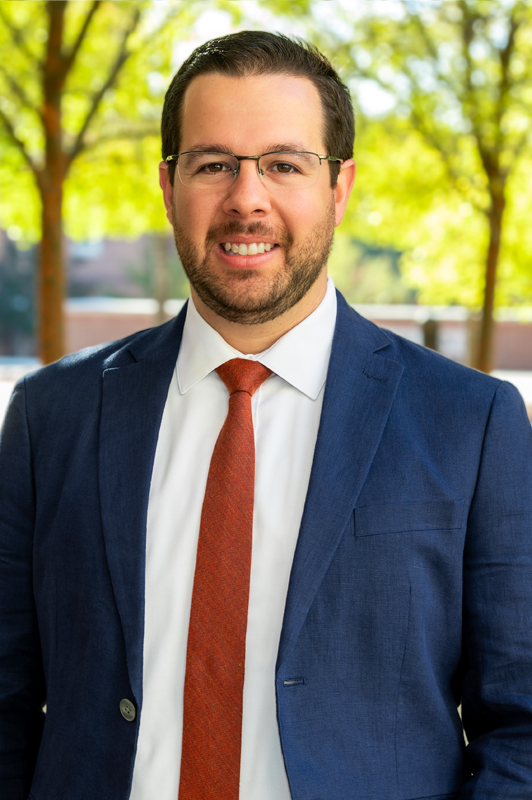Civil and Environmental Engineering assistant professor and Stormwater Research Facility part of $1.3M grant to safeguard Gulf Coast ecosystem
Published: Sep 28, 2023 8:00 AM
By Dustin Duncan
Stormwater runoff from urbanized areas flows directly into streams, creeks, rivers, lakes and oceans, carrying excessive pollutants, including nutrients like nitrogen and phosphorus.
Shiqiang Zou, assistant professor of civil and environmental engineering (CEE) and Michael Perez, associate professor in CEE, are collaborating with the University of South Alabama on a three-year, $1.3 million project to upgrade geotextiles to filter excessive nutrients from stormwater runoff into the Gulf Coast ecosystem. Auburn University has been awarded $420,000 as part of the grant. Other collaborators include Wake Forest University and Mobile Baykeeper.
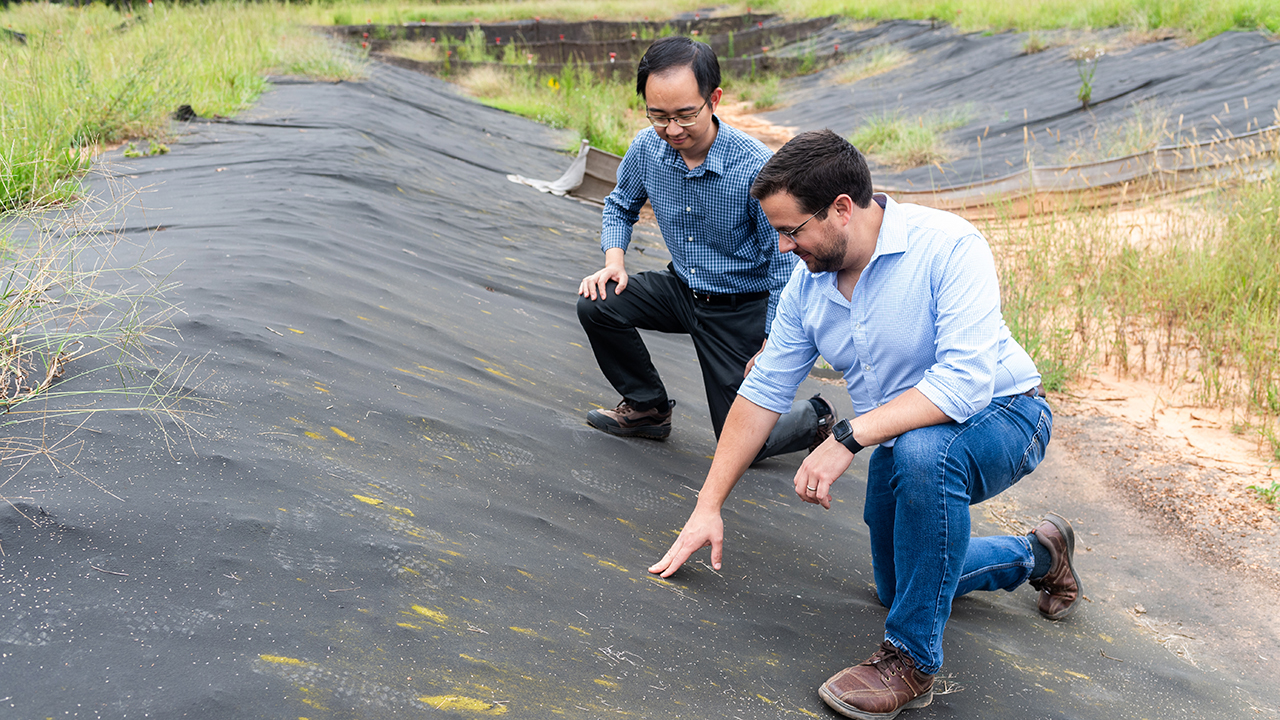
The project, "Non-woven bio-plastic-based hybrid geotextile for urban stormwater phosphorus management," is sponsored by the Environmental Protection Agency.
Zou said the project's groundbreaking nature arises from its innovative design of a polylactic acid bioplastic-based geotextile embedded with metal oxides, which will remove phosphorus from stormwater runoff. Phosphorus and other nutrients can fuel the growth of harmful algal blooms that deplete oxygen levels, disrupt aquatic ecosystems and endanger aquatic life.
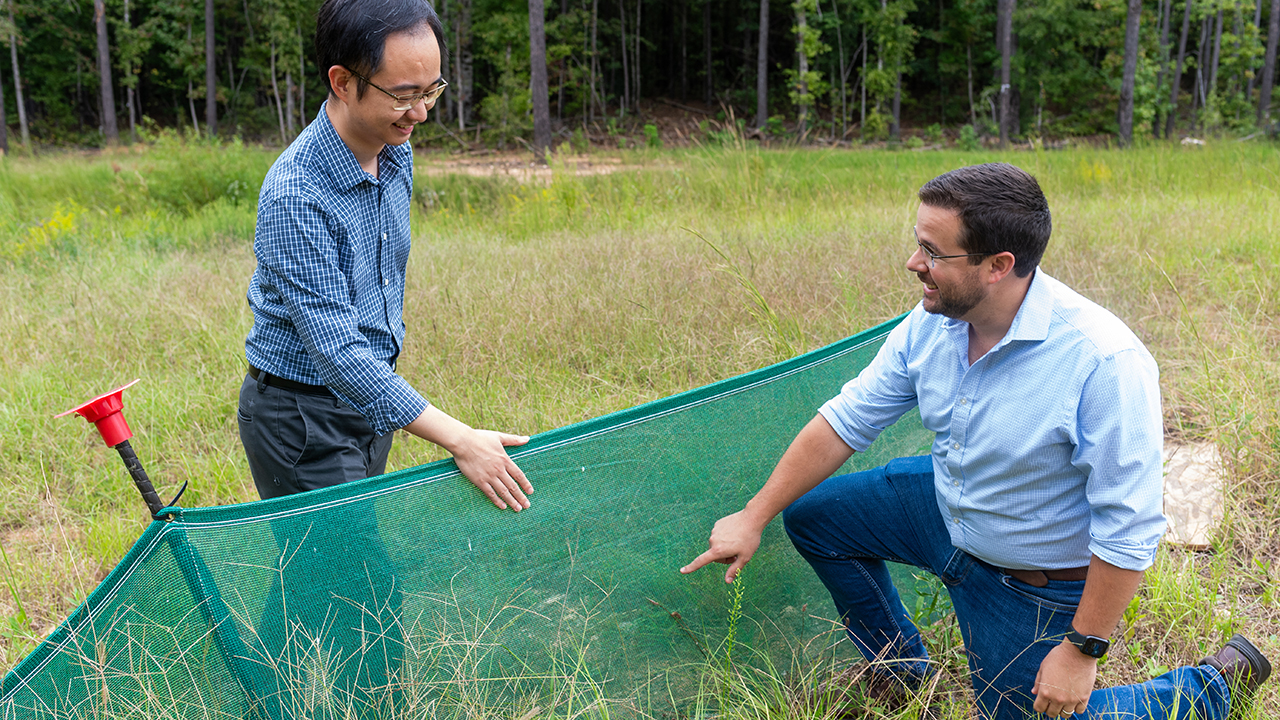
While geotextiles are used at construction and industrial sites, Zou said they are primarily employed to control soil erosion while allowing rainwater runoff.
"If we can repurpose those geotextiles to not only prevent soil erosion but also use them as filters to retain nutrients in the water and prevent them from reaching the Gulf Coast, we would kill two birds with one stone," Zou said. "We're not trying to reinvent the wheel with this research but rather enhance existing infrastructure to fulfill its original function and perform even better."
The non-woven bio-plastic-based hybrid geotextile is embedded with phosphorus adsorbents. According to Zou, the geotextile's filtration properties enable it to capture sediment and nutrients, preventing them from reaching bodies of water. By controlling the gradual release of adsorbed nutrients, the geotextile helps balance soil enrichment while minimizing water body contamination. The filtration process also reduces the risk of harmful algal blooms, thus contributing to the sustainability of water quality.
“Furthermore, the geotextile's eco-friendly materials align with sustainability goals, promising enhanced water clarity, preserved habitats and improved ecological health,” Zou said.
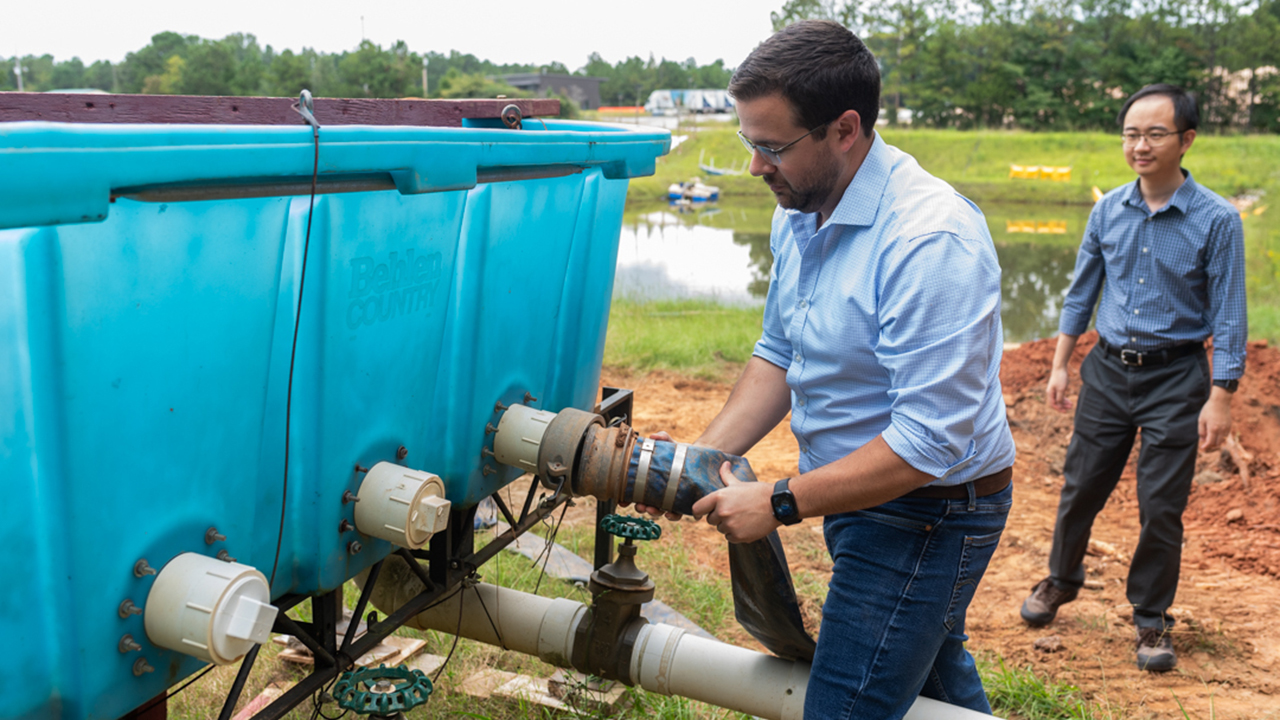
Using Auburn's Stormwater Research Facility, Zou and Perez can simulate heavy precipitation and runoff conditions in a retention pond.
“We will be able to use the developed geotextiles and take water samples,” Perez said. “Being able to do a real-world simulation at the Stormwater Research Facility will give us better data and can better reflect the performance of the technology, providing more accurate estimations on how it works.”
The research will involve designing and constructing field testing apparatuses, developing standardized protocols for geotextile evaluations and water quality assessments, and conducting comparative analyses with commercial and modified geotextiles.
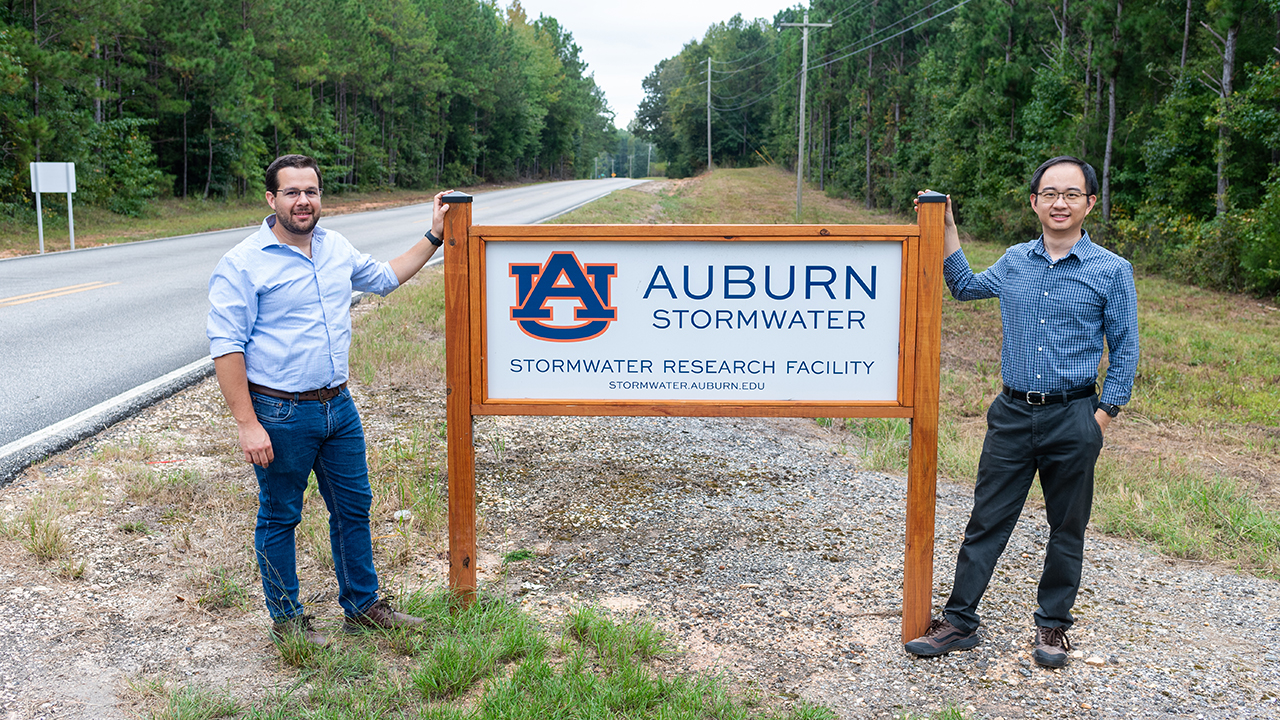
Shiqiang Zou, assistant professor of civil and environmental engineering (CEE) and Michael Perez, associate professor in CEE, are collaborating with the University of South Alabama on a three-year, $1.3 million project to upgrade geotextiles to filter excessive nutrients from stormwater runoff into the Gulf Coast ecosystem.
Media Contact: , dzd0065@auburn.edu,
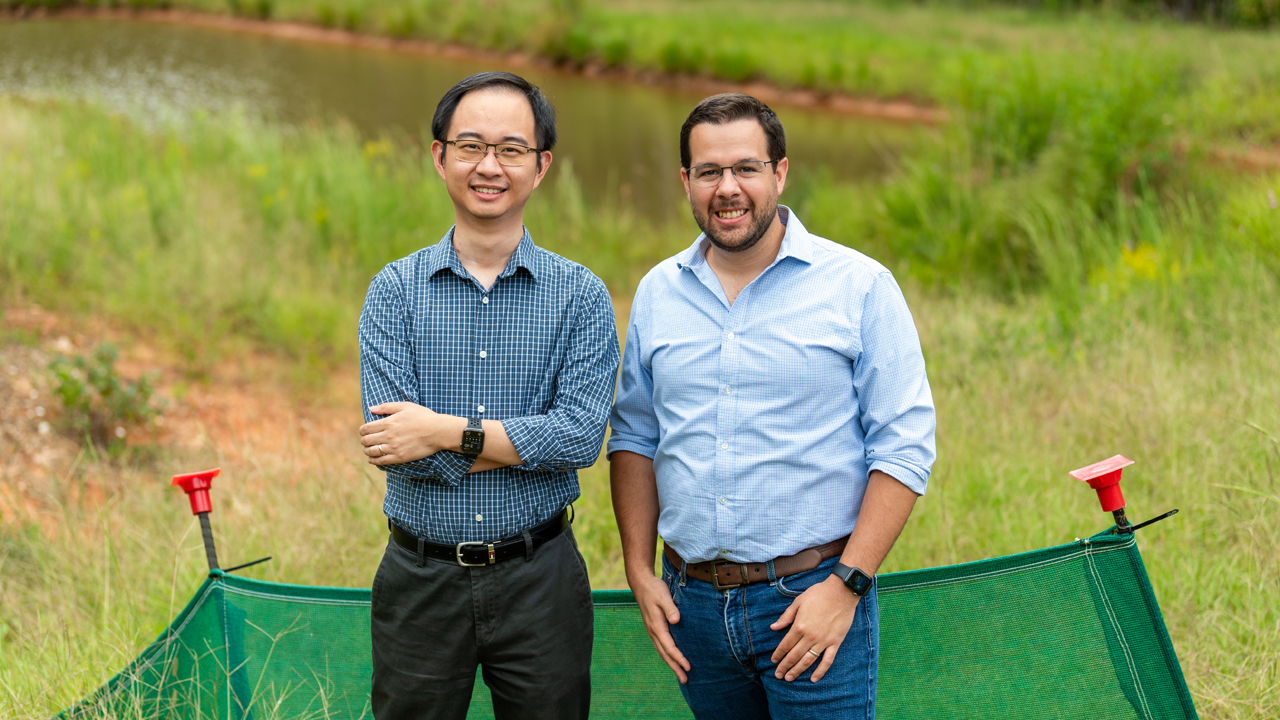
Shiqiang Zou, assistant professor of civil and environmental engineering (CEE) and Michael Perez, associate professor in CEE, are collaborating with the University of South Alabama on a three-year, $1.3 million project to upgrade geotextiles to filter excessive nutrients from stormwater runoff into the Gulf Coast ecosystem.


